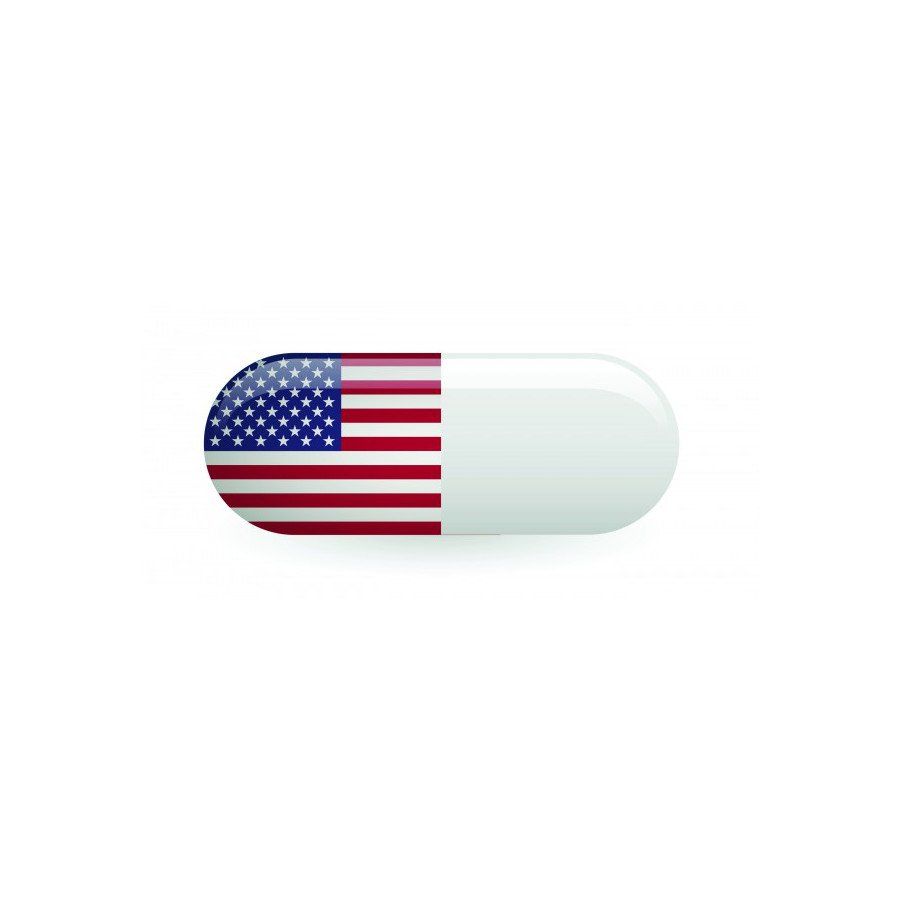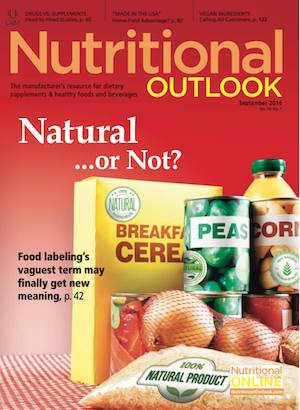Dietary Supplements: Made in the USA?
What does “Made in the USA” mean in a global age?
Photo © iStockphoto.com/Blablo101

Seeing “Made in the USA” on a label can cause even a crusty old cynic’s heart to swell. And in this year of the Olympic Games, a presidential election, and an ambient sense that the world is coming unmoored, that pledge of domestic production is, for many Americans, especially grounding. So grounding, in fact, that a 2015 Consumer Reports survey found eight in 10 Americans claiming they’d rather buy an American-made product than an imported one, with more than six in 10 pledging a willingness to pay as much as 10% more for it.
Yet if “Made in the USA” declarations project patriotism, pride, or preferential trade policy to the purchaser of a watch or riding lawnmower, to the supplement shopper the claim’s implications are arguably more significant-namely, quality and safety. Or, as Eugene Ung, CEO, Best Formulations (City of Industry, CA), puts it, “There is an expectation, at least on the part of the U.S. consumer, that supplements should be made in the USA.” Their bottom line, he wagers, is that “with anything you put in your body, people get a little more concerned about its origins.”
This leaves today’s supplement marketers-who operate in a competitive global environment-balancing the financial as well as reputational costs of domestic versus overseas manufacturing when deciding where to produce their products. Not surprisingly, there’s no quick formula for balancing that equation, but there is hard-earned advice that can steer companies to solutions that work for them and their patrons.
“Made in the USA” Matters
When it comes to nutritional supplements, not to mention functional foods and beverages, “Made in the USA” is a valuable claim in the consumer’s eyes. And though nobody’s determined definitively what drives consumers to domestically produced health-and-wellness products, “It stands to reason that it could be a mixture of patriotism, the value placed on American jobs, or possibly some suspicion about the quality or safety of foreign-made products,” says John E. Villafranco, partner, Kelley Drye & Warren LLP (Washington, DC).
As someone who counsels clients on advertising law, product labeling, and health and safety claims, Villafranco knows whereof he speaks. And so does Ung, who works with marketers to produce nutritional supplements for consumers in the States and abroad. He’s found that not only is a claim to U.S. manufacture “really important in the dietary supplement market”; it’s more important there than it is in the market for, say, textiles or electronics, where “people just don’t seem to care.”
Leveraging the Claim
In one sense, the value of a “Made in the USA” claim is a product of people’s perceptions. But it’s also the result of a labeling regime, overseen by the Federal Trade Commission (FTC), that prescribes when a marketer can claim that something truly is made in the USA.
And yet the extent to which supplement shoppers or marketers fully grasp what the claim means-or what requirements a marketer must meet to legally proclaim it-remains slim. As Villafranco has observed, “Many product sellers seek to use ‘Made in the USA’ claims, or more qualified claims about U.S. origin, even if a ‘Made in the USA’ claim is not possible based on FTC standards.”
In short, those standards dictate that “all or virtually all” of a product be made in the United States for a product legitimately to declare itself “Made in the USA.” And by “made,” Villafranco adds, what we’re talking about “comes down to both sourcing and the actual creation of the product.” Generally speaking, “If all ingredients are domestic and the product is manufactured in the United States,” he says, “the product will count as ‘Made in the USA.’”
Alas, says Ung, “I think there’s a lot of grey area, and some companies may stretch” the “Made in the USA” designation. For example, certain ingredients common to supplement formulations aren’t readily available from domestic sources; indeed, “in our industry, a lot of the raw materials are made in China,” Ung notes. “Whether the end-consumer knows that or not, it’s somewhat disguised because there are contract manufacturers in the middle.” And as if that’s not enough, when the contract manufacturers themselves operate abroad, a product’s origin story grows even harder to follow.
STORY CONTINUES ON PAGE 2
Mixed Picture
It’s worth noting that “abroad,” in the context of supplement contract manufacturing, more often than not equals “China.” And though it’s not the only name in town, Ung says, “As with everything else, it’s a big name in town.” It attracts marketers looking to contract production for two main reasons: price and availability. Operational and labor costs are lower overseas-both in China and elsewhere-“and that’s a big motivating factor” guiding manufacturers, especially the price-sensitive ones, to outsource supplement production, Ung says.
The catch, adds Villafranco, is that overseas manufacturers “may be less sophisticated in complying with U.S. regulatory laws, like GMPs.” And it’s no secret that China has struggled here. Its manufacturers “faced significant problems in the past with economic adulteration,” Villafranco notes. The addition of melamine to milk products and infant formula for the purpose of artificially boosting protein analysis is merely one of the higher-profile incidents to come to light.
“Chinese companies have not done themselves any favors by behaving as they have,” Ung says. “There’s not the same stigma for ‘Made in Australia,’ or New Zealand, or Western Europe, Japan, Korea-but ‘Made in China’ has a really negative stigma to it.”
And yet it doesn’t have to be this way, he believes. His own company knows what it’s like to work with a foreign-owned soft-gel manufacturing facility in China, having done so about a decade ago. With their goal being to produce more competitively priced commodity soft gels for its customers, Ung explains, “We built the facility, we designed it, and we ran it using our quality systems, processes, and SOPs.” What’s more, they purchased raw materials not in China but from “very well-known, quality-oriented suppliers from the U.S.,” he adds.
Yet despite all their i-dotting and t-crossing, the venture “was just a no-go,” Ung concludes. “It was extremely difficult for us to sell the finished product because it was made in China. It just had that image.” Even though their customers were familiar with and trusted the company’s record, “they didn’t want to be made in China because they would have to put that on a label and it would be a problem for them.”
Ultimately, he feels that the reputation unfairly paints Chinese manufacturing writ large with a tarry brush that some individual manufacturers don’t deserve. “At our facility,” he points out, “we had no issues.”
Unfairly or not, overseas manufacturers may need to be even more transparent in order to set their clients’ minds at ease. “One of the most effective ways to help clients be satisfied with ingredients sourced outside the USA is by allowing them to review the raw-material supplier-qualification process and to show them how we ensure quality at all levels of the manufacturing process,” says Vincent Tricarico, vice president, contract manufacturing, NutraScience Labs (Farmingdale, NY). Firms can also seek guidance from an organization like the U.S.–China Health Products Association, whose goal is to promote the commerce of health products in China.
“It’s just like any other relationship in that you do the audits and you’re open about what’s happening behind closed doors,” Ung says. True, there’s a “dog-and-pony-show” aspect to oversight procedures in China-and for understandable reasons. “But it’s not the case that it can’t be successful; there are just a lot of challenges. And then it becomes a business decision as to whether it makes sense to outsource manufacturing to China.”
Bring It on Home
Since the recession, Ung says, “a lot of manufacturing outside our industry has returned to the U.S. because China is experiencing incredible inflation and the wages have risen significantly, so you don’t have the cost advantage today that you used to.” That may be reason enough to renew an embrace of “Made in the USA” and bring supplement production back home.
But every marketer’s decisions will differ. What’s most important, Ung believes, is “understanding the reason why they’re going overseas” in the first place. And when analyzing the costs versus benefits, marketers should account for the risks, he adds, but not just to a brand’s good name; the risks involved in dealing with customs, waiting out supply-chain and inspection delays, navigating a foreign environment. “There are just a lot of unknowns,” Ung says.
So, he advises, “have a strong understanding of what can happen when you do outsource manufacturing overseas.” And if it looks like more than you care to handle, it might feel good to come home and be “Made in the USA.”
Also read:
Substantiating "Made in USA" Claims for Dietary Supplements
The Price of Dietary Supplement Contract Manufacturing
China Should Be the Largest Market for Dietary Supplements. So Why Have Exports to China Stopped?

Mars partners with suppliers like ADM to bring regeneratively grown ingredients to pet food
November 25th 2024Mars (Franklin, TN) is collaborating with partners and suppliers like ADM, The Anderson, Inc., Riceland Foods, and Soil and Water Outcomes Fund through its Royal Canin USA and Petcare U.S. Inc. brands to provide financial incentives to farmers to implement regenerative agricultural practices.
Senate Committee has released the text of 2024 Farm Bill, with changes to hemp regulations
November 19th 2024The U.S. Senate Committee on Agriculture, Nutrition, & Forestry has introduced the Rural Prosperity and Food Security Act, which will serve as the Senate’s draft for the 2024 Farm Bill.